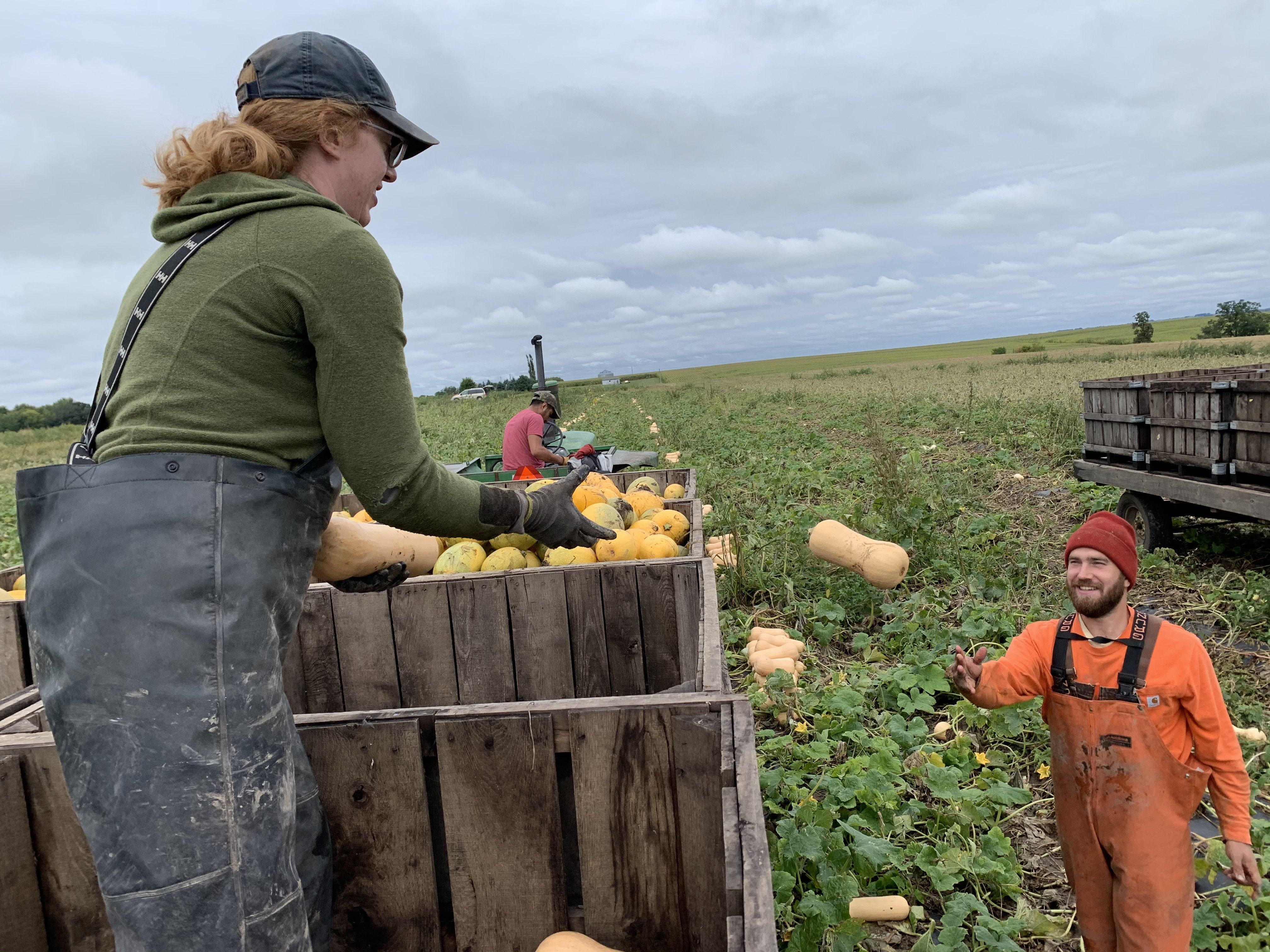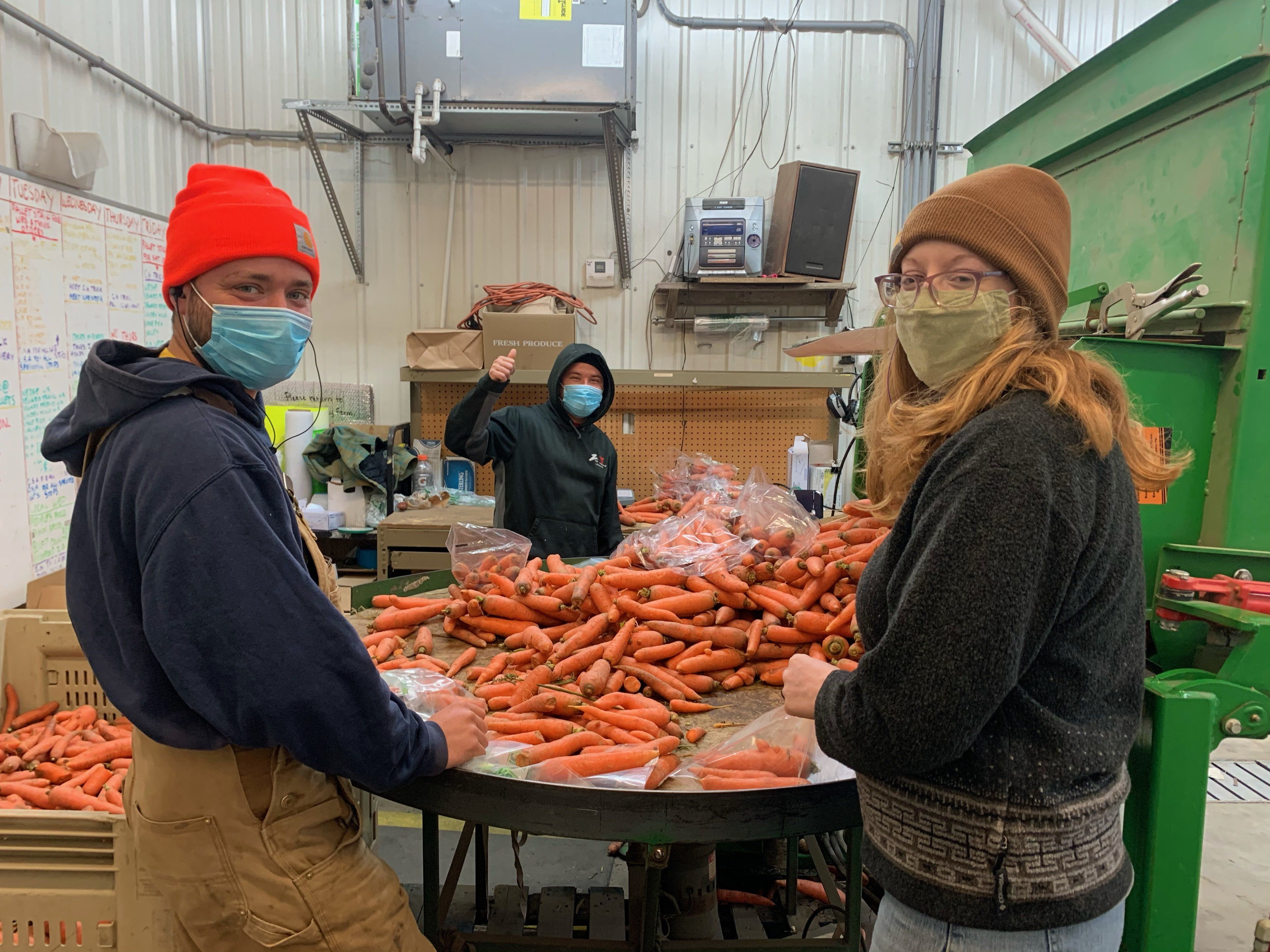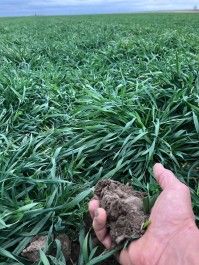Greetings CSA Members-
I had one of those “ah ha!” moments the other day, courtesy of my i-phone’s auto correct. Getting to the punch line requires a bit of backstory, however.
It was late Friday afternoon, the work of the week had run down, and the sun was still high enough to make a final warm fall field walk irresistible (on the ridge, anyway). I started out from my family’s new porch/camper at the Anderson farm, walking north into fields that we will farm for the first time next spring, after 3+ years of organic transition and certification.
This particular field had been subleased to our neighbors at Sno Pac foods in April; they planted and combined a crop of sweet peas for their freezing operation in mid July. In August, we worked the ground lightly and then planted a mixed cover crop of winter rye and hairy vetch. Seeded together, these two crops are a perfect organic “fertility factory” and soil builder for next year’s broccoli crop.
Here’s just how this works. The rye and vetch grow up to about 6” high in the fall and then go dormant, protecting soil from wind and snowmelt erosion all winter. Next spring they will “green up” with the first warmth of March, and begin their real work; the rye growing fast and generating tremendous biomass (green growth = carbon capture = perfect “feedstock” for soil microorganisms when chopped and plowed down in May) and the vetch hosting soil bacteria that “fix” nitrogen from the atmosphere (as all legume crops do), providing the majority of the N that the broccoli will need to produce a fat crop next September.
There is nothing more satisfying for me at Featherstone Farm, than seeing a healthy cover crop like this one. Cover crops do the “real work” of sustainability in the most comprehensive, organic way possible. As I walked in the lush ankle deep green shag at Anderson’s last Friday, I got a text from Abby (Field Production Co-ordinator) about something or other. I paused to respond, then added on a compliment to her management, which had established this crop at just the right time, at just the right seeding rate etc etc. [BTW I’d estimate that 85% of the entire farm is planted to some sort of cover crop this fall, an all time record here].
But my phone- and thick thumbs- were giving me trouble. As I described the healthy rye-vetch cover and tried to key in “so good for the soil”, my phone auto corrected (twice!!) to “so good for the soul” (emphasis mine). Damn. It was like the silicon genies taking over, reminding me of an essential, ground level truth of farming; what’s good for the soil is good for life in general, mind, body and spirit. This is why I got into agriculture as an idealistic 20 year old. And this is why it remains the vocation of a lifetime, all these years later.
Featherstone Farm has ridden an unbelievable 25 year roller coaster of growth and recession, success and failure, near death (as recently as 4 short years ago) and recovery… I shake my head just writing this. The one truly grounding constant through it all is soil. As historian Steven Stoll describes it, that vanishingly thin “tablecloth on which the banquet of civilization is laid.”
As my thoughts churns with news of election disputes, global pandemic and recession and (above all, for me anyway) ongoing climate collapse, a periodic walk in cover crops helps remind me why I get out of bed every day.
Gratefully-
Jack




